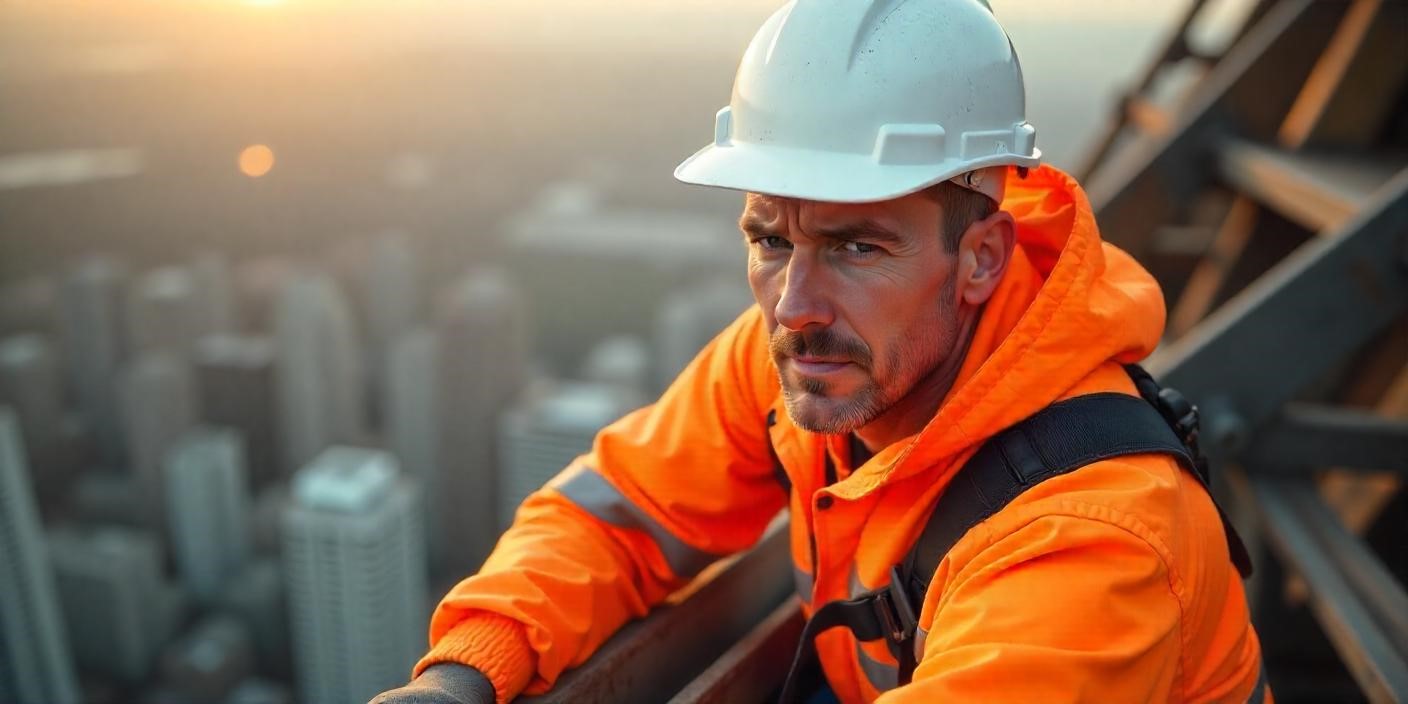
As we observe Stress Awareness Month 2025, it’s important to acknowledge the impact of working at heights on workers’ mental well-being and to seek ways to foster a safer, less stressful work atmosphere.
Working at height is one of the most challenging and high-risk tasks in the construction and industrial sectors. Whether on scaffolding, ladders, rooftops, or elevated platforms, employees face both physical dangers and mental stress. The fear of falling, strict deadlines, unpredictable weather, and physically demanding work all contribute to heightened stress levels, which can impact safety, focus, and overall well-being.
By adopting appropriate safety protocols, providing the right equipment, and offering mental health resources, we can help employees feel more secure and assured while performing their tasks at height.
There are many factors that contribute to the stress of working at height, impacting both physical and mental well-being. If not addressed effectively, this stress can increase the chances of accidents occurring. Here’s why:
Falling from height remains one of the leading causes of workplace fatalities. Employees who lack the correct fall protection equipment or height safety training may feel unsafe, which increases their anxiety and stress on the job. The fear of accidentally dropping tools can also contribute to stress in the workplace, as employees become concerned about the possible outcomes.
Working at height requires constant focus to prevent accidents, which can be mentally exhausting. Physical fatigue from climbing ladders, balancing on scaffolding, or working close to the edge can also add to stress levels.
Many height-related jobs must be completed within strict timeframes, increasing workplace pressure. Workers may feel rushed, leading to riskier behaviours and a higher chance of mistakes.
Wind, rain, extreme heat, or cold can make working at heights more dangerous and uncomfortable. Unpredictable conditions increase stress levels, as workers must stay extra vigilant.
Inadequate fall protection equipment, faulty scaffolding, or unclear safety procedures can create an unsafe work environment. A lack of clear safety signage on site can also cause confusion and increase workplace anxiety.
Employers have a responsibility to prioritise both physical safety and mental well-being when managing work at height. Here are some key ways to reduce stress and improve safety:
Ensuring workers have the right PPE and safety gear can significantly reduce stress and improve confidence when working at height. Essential height safety equipment includes:
When workers trust their safety gear, they feel more secure, reducing stress levels and improving focus.
Knowledge is power, and proper training helps workers feel more confident and in control. Employers should:
Workers who feel well-prepared and knowledgeable about safety procedures are less likely to experience anxiety while on the job.
Using tool tethering systems significantly reduces the risk of dropped tools, giving workers peace of mind while working at height. Employers should make sure that every employee has access to:
By adopting tool tethering policies and providing training, workers can concentrate on their job with greater ease, confident that their tools are secure and that those below them are safe.
Fatigue is a significant contributor to stress and workplace accidents. Employers should:
A well-rested worker is more alert, focused, and less prone to stress-related errors.
Creating an open environment where workers feel comfortable discussing stress and safety concerns is essential. Employers can:
When workers feel supported, they are more likely to speak up about stress before it leads to burnout or accidents.
Weather conditions can greatly impact stress levels for workers at height, employers should:
Being proactive about weather-related risks reduces uncertainty and gives workers peace of mind.
Stress Awareness Month 2025 is the perfect time to highlight the connection between mental well-being and workplace safety. When workers are stressed, they are more likely to lose focus and make mistakes, take shortcuts that compromise safety and experience fatigue that reduces alertness
By addressing workplace stress, employers can reduce accidents, improve productivity, and create a more positive work culture.
At Leading Edge, we are committed to improving height safety practices and worker well-being. That’s why we supply industry-leading height safety equipment and provide world-class height safety training courses to help businesses create a safer, less stressful work environment.
Don’t let workplace stress put your employees at risk – take proactive steps to ensure they feel safe, supported, and stress-free while working at height.
Copyright 2025 Leading Edge Safety. Devloped by Czargroup Technologies